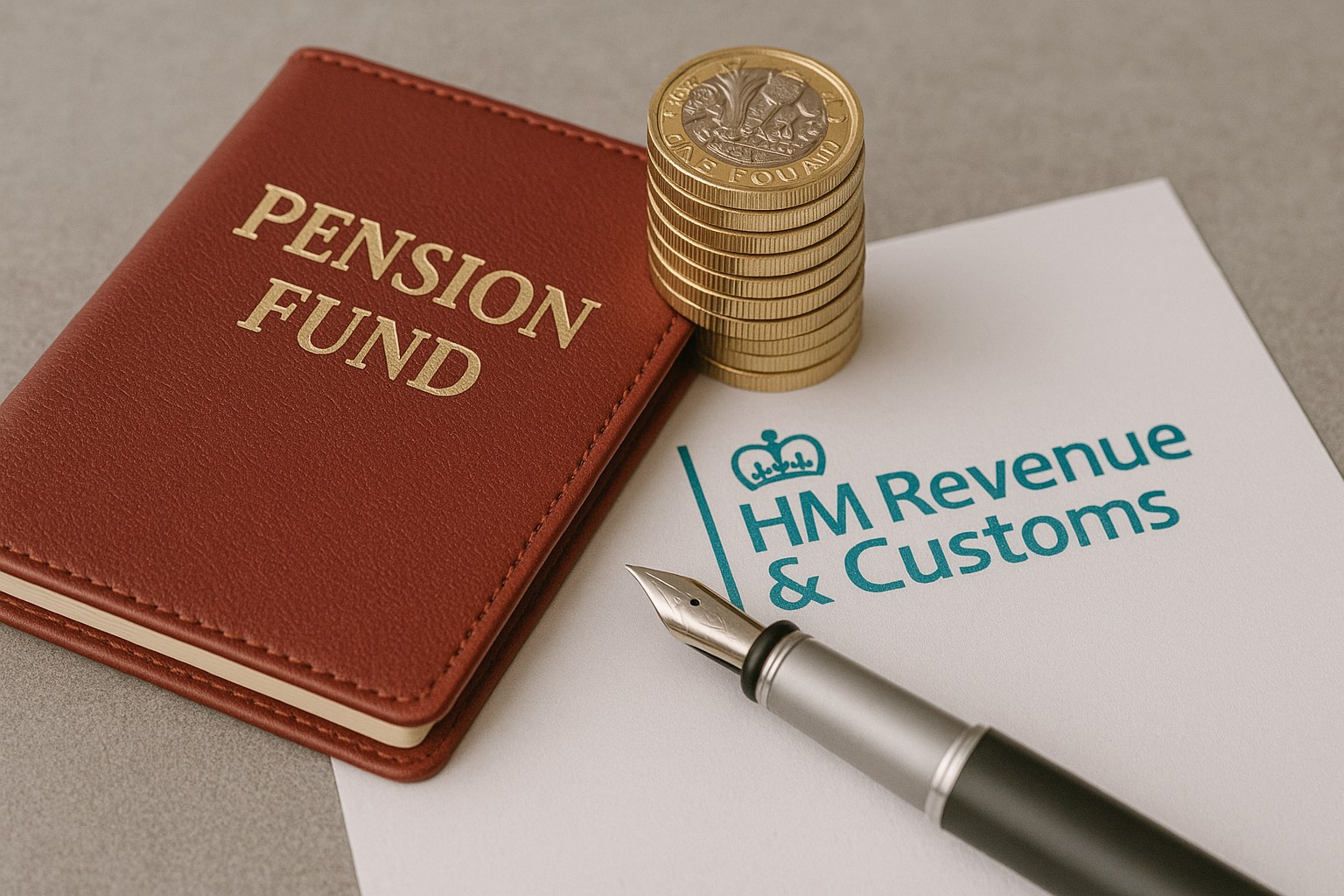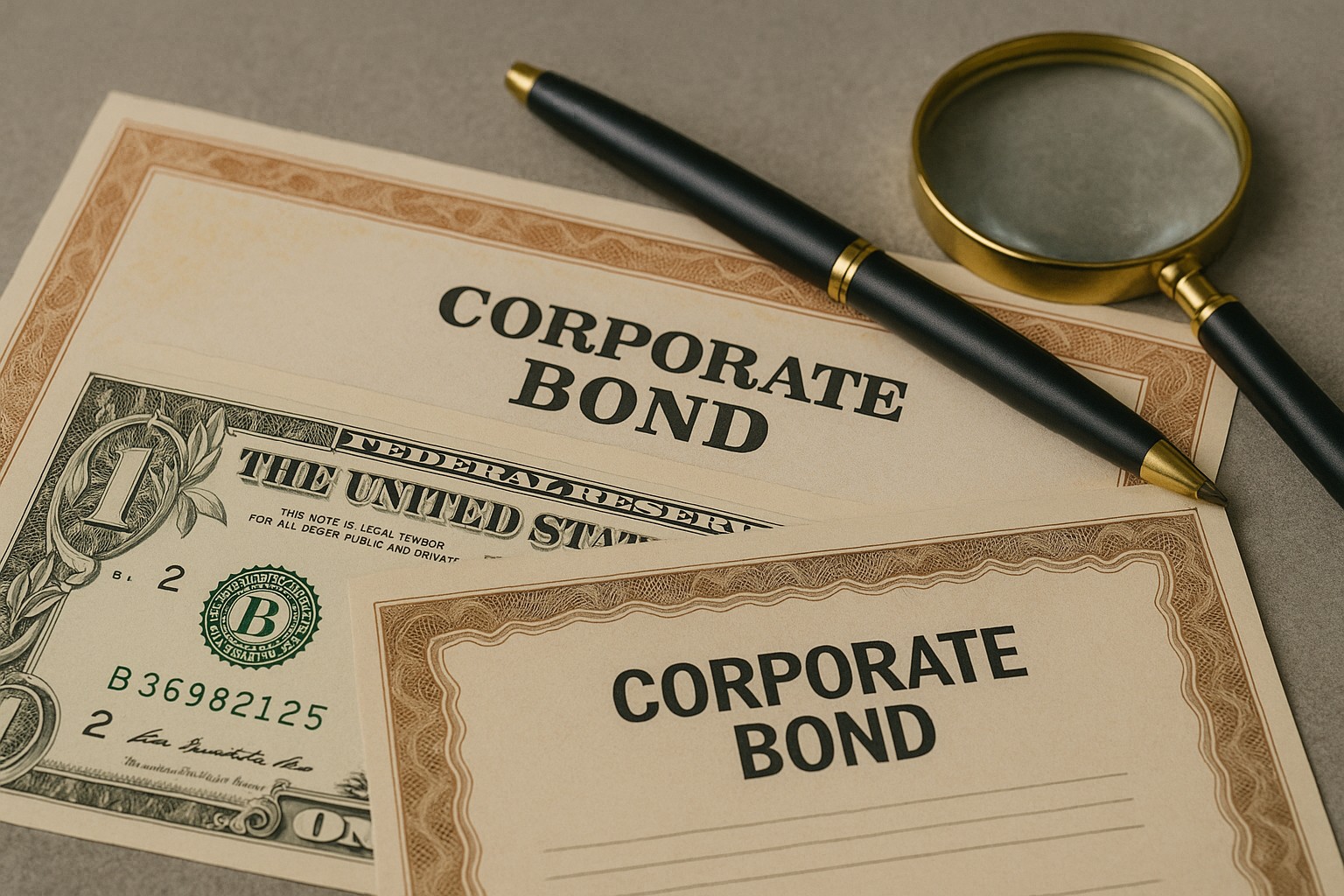Best Long-Term Investments for UK Investors
10/07/2025Daniel Fisher
Free & fully insured UK Delivery. Learn more
Secure & flexible payments. Learn more

Buyback Guarantee Learn more

Everyone wants to get rich quick. Taking huge gambles on risky investments or acting on supposed insider tips to accumulate wealth in a very short timeframe. But realistically this approach almost always ends in tears and losses.
When it comes to growing your wealth, few strategies are as effective, or as reliable, as long-term investing. Whether you’re planning for retirement, saving for your children’s future, or simply looking to make your money work harder over time, choosing the right investments can make a big difference.
In the UK, there’s a wide range of options available to investors, from the stock market and property to more defensive assets like bonds and physical gold. But with so many choices, it can be hard to know where to start.
This guide breaks down some of the best long-term investments available to UK investors. Whether you have £1k or are contemplating the best ways to invest £100k. We’ll cover the pros and cons of each option, highlight what makes them suitable for long-term growth, and help you understand how to build a resilient portfolio that aligns with your goals.
Long-term investing is a strategy focused on holding assets, such as stocks, property, or precious metals, for an extended period, typically several years or even decades. This approach allows for financial planning, whereby certain goals can be achieved by growing money over a longer timeframe. These goals could be retirement, saving for a home, sending children through private education, or even buying a yacht!
Unlike short-term trading, which aims to profit from quick price changes, long-term investing is about allowing your money to grow steadily over time, often through compound returns and reinvested earnings.
It’s a patient approach that rewards consistency, discipline, and resilience through market ups and downs. Investments should be based on your belief in their fundamentals which will reap profit in the long term, rather than the technical knowledge required to exploit shirt term trading opportunities.
One of the main advantages of long-term investing is the power of compound growth – essentially earning returns on your returns. The longer your money stays invested, the more time it has to grow, especially if you reinvest dividends or interest.
Other key benefits include:
By staying invested through market cycles, you give your portfolio the opportunity to recover from volatility and benefit from long-term economic growth.
What counts as “long term” can vary depending on your goals:
The key is matching your investment choices with your time horizon and comfort with risk. Long-term investing isn’t about getting rich quickly, it’s about building wealth steadily and securely over time.

Rather than selecting long-term investments simply based on their appeal or potential returns, it’s important to lay the groundwork with a clear understanding of your financial situation, goals, and how much risk you’re comfortable taking.
The very nature of investing over an extended period of time, means that the chances of your circumstances changing, the macro environment evolving, or the investment itself altering, are greatly increased.
Making thoughtful decisions at the start can help you avoid common mistakes and build a portfolio that works for you over time. Selecting the most suitable investments for your personal situation and possible evolution will help mitigate any changes outside of your control.
Risk tolerance refers to how much investment risk you’re willing, and able, to take. This depends on several factors, including:
Understanding your risk tolerance helps you choose investments that you’ll stick with, even during market downturns. The basic rule of thumb is the higher the investment risk, the higher the possible return (and loss).
Diversification means spreading your money across a mix of asset types (like stocks, bonds, property, and gold) so that no single investment has too much impact on your overall portfolio. It’s a key principle of risk management.
Asset allocation refers to how you divide your investments among these asset classes, based on your goals and risk tolerance. Many investors will find it difficult to label themselves as high, medium, or low risk. A good approach can be to break down your investment capital into various assets representing a mix of risk appetite. For example, £10k of capital, could be allocated into £2k high risk, £5k medium risk, and £3k low risk.
A well-balanced portfolio might include:
Over time, you may need to rebalance your portfolio to maintain your desired mix or reflect your developing risk appetite.
Making investment returns, income, and profit is only one part of the winning formula. Choosing tax-savvy options will help you keep more of those profits to spend or re-invest. While some investment products are specifically designed with tax efficiency in mind, many mainstream assets will be available as standard or tax-efficient versions. It’s always worth researching whether your desired investment can be executed within a tax-efficient wrapper or in a tax-free way.
It’s important to select tax efficient options specifically relevant to UK investors, as tax regimes treat investments differently around the world. The tax implications for UK gold and silver investors are very different to those in the US for example.
The UK offers several tax-advantaged accounts that can help you maximise your investment returns:
Using these accounts can significantly reduce your tax burden and improve your long-term returns.
Comprehensive A-Z of gold investing options and opportunities
Now let’s get down to the nitty gritty and explore some of the best options for UK long term investors. Whether you’re looking for steady growth, capital preservation, or inflation protection, there’s no one-size-fits-all solution. So the key is choosing a mix of investments that align with your goals, time horizon, and risk tolerance

Investing in stocks, also known as equities, means buying a share of ownership in a company. Over the long term, equities have consistently delivered some of the highest returns compared to other asset classes, making them a core component of many investment portfolios.
The huge breadth of industry choice means that investors can elect to invest in equities anywhere along the risk spectrum, whether it be high risk tech stocks or far lower risk utilities and healthcare stocks.
💡 Tip: For most long-term investors, a diversified portfolio of shares (ideally via a fund or ETF) reduces individual company risk while still offering strong long-term growth potential.
Read our article comparing Stocks and Gold Investment

Index funds and exchange-traded funds (ETFs) are popular with UK investors who want a simple, low-cost way to grow their wealth over time.
Also known as Trackers, these funds trace the performance of a specific market index, such as the FTSE 100 or MSCI World, providing instant diversification across dozens, or even thousands, of companies.
Most of these funds can be held inside an ISA or SIPP for tax efficiency and are available on popular UK platforms like Vanguard, AJ Bell, or Interactive Investor.
💡 Tip: Consider using a monthly direct debit to “drip feed” into your chosen fund, which can smooth out market ups and downs over time (a strategy known as pound-cost averaging).
Read our article comparing physical gold vs gold ETFs

Property has long been a popular long-term investment in the UK, offering both potential capital growth and regular rental income. Some would say that the thought of becoming a property tycoon is a national obsession.
While buying physical property can require a significant upfront investment, there are also more accessible ways to gain exposure to real estate markets. With limited space within the UK and an increasing population, the supply/demand dynamics of UK property investment seem favourable.
But with tax relief and treatment on UK investment property tightening considerably over the past few years, it’s worth doing some careful sums before you dive head first.
💡 Tip: For investors who want property exposure without the hassle of being a landlord, REITs and property funds can be a more flexible and cost-effective alternative.
We discuss in more depth the comparison between property and gold investment.
Use our automated portfolio builder to get suggestions based on various investment objectives.

Pensions are the most obvious and one of the most powerful long-term investment tools available to UK residents.
Whether you’re paying into a workplace pension or managing your own Self-Invested Personal Pension (SIPP), pensions offer tax-efficient growth and long-term compounding benefits that make them ideal for retirement planning.
Their tax benefits surpass any other form of long-term investing, but they come with access restrictions that are crucial to consider.
💡 Tip: While pensions can’t be accessed until age 55 (rising to 57 in 2028), their tax benefits make them one of the most effective long-term investment vehicles available to UK investors. However, be aware that pensions leave you vulnerable to legislative changes, which could leave you out of pocket or unable to access your funds until a later age.
We look at how gold bullion can be added into a SIPP in detail.

Gold has been considered a store of value for thousands of years, for good reason. As a physical asset that isn’t tied to the performance of any single company or government, buying gold can provide stability and protection during times of economic uncertainty.
For UK investors, it can play a valuable role as a long-term hedge within a diversified portfolio. Gold’s intrinsic value appeals in the same way as property, providing a physical alternative to the plethora of paper investments.
If you prefer not to hold gold physically, you can also consider:
💡 Tip: Focus on ‘best value’ gold coins which are pre-owned and come at a discount to brand new versions. You’ll receive exactly the same for them when it’s time to sell.
Shrewd Gold Investing

Bonds are debt instruments issued by governments or companies to raise capital. In return, investors receive regular interest payments (known as the “coupon“) and get their capital back at the end of the term. While generally more stable than equities, bonds can still play an important role in a long-term portfolio, especially for those seeking income or a lower-risk balance.
Bonds tend to constitute a larger part of a mature investor’s portfolio due to the dual aspects of lower deemed risk and income provision. As investors head towards retirement, this combination of factors tends to suit both their risk profile and need to replace previous work income.
💡 Tip: While bonds typically offer lower long-term returns than stocks, they’re valuable for balancing risk and protecting capital, especially as you near your investment goals.

As sustainability becomes increasingly important, green and ethical investments are gaining traction among UK investors. These investments focus on companies and projects committed to environmental, social, and governance (ESG) principles, offering the potential for both financial returns and positive societal impact.
Still in its infancy as a sector, ESG investments have so far underperformed ‘unrestricted’ funds. While the gap between ESG and non-ESG focussed investments may close as the sector matures, investors will need to decide on their priorities and balance between returns and ethical values.
💡 Tip: As with any investment, it’s important to conduct thorough research, ensure that the green or ethical label is backed by transparent and verifiable criteria to avoid “greenwashing.” ESG investing can help avoid possible sharp portfolio losses caused by the bad press associated with unethical practises.


No single investment ticks every box. Each comes with its own strengths, risks, and role within a portfolio. The key to successful long-term investing is diversification: spreading your money across different asset types to balance growth potential with risk management. Also known as asset allocation, this approach creates a spread of risks to achieve the adage of not putting all your eggs in one basket.
With the increasing interest in super volatile digital assets such as Bitcoin, pairing such an investment with a well-established low risk option such as gold can provide a more prudent approach. This strategy benefits from the possible vast upside of the riskier asset, while maintaining a degree of protection by also holding the safe-haven investment.
Understand how Gold and Bitcoin stack up against each other.
A well-constructed long-term portfolio often includes a mix of:
Fluidity is key to successful long-term investing. While it may appeal to select your mix of assets and sit on them for decades, inevitably what may work for the first few years, may not continue to bring success in latter years. This is down to two factors.
Firstly, the macro framework constantly evolves. Legislation changes, political unrest, and simple trend changes can significantly impact how investments perform.
Secondly, your needs as an investor develop both with your life-stage and unexpected changes to your personal circumstances. Portfolios should be updated to reflect these evolving needs.
Your ideal asset mix will depend on your age, goals, and risk tolerance:
💡 Tip: Revisit and rebalance your portfolio regularly, at least once a year, to ensure it still reflects your long-term goals and current circumstances. January works well to act as a catalyst to revisit and re-assess your investments.
Even with the best intentions, long-term investors can fall into traps that derail their financial goals. Being aware of these common mistakes can help you stay on course and make smarter decisions with your money. Awareness that greed and fear can impact the clarity of any portfolio strategy is important.
Attempting to buy at the lowest point and sell at the highest sounds ideal, but in reality, it’s incredibly difficult, even for professionals. Constantly jumping in and out of investments often leads to missed opportunities and lower returns. The greatest stock market gains have been in the weeks following the largest market crashes.
✅ Instead: Focus on time in the market, not timing the market. Consistent investing over the long term tends to produce better results.
High fees can eat away at your investment returns over time. This is particularly true for actively managed funds, trading platforms with high costs, or frequent trading habits.
There will be a spread between the buying and selling price of any asset. Knowing the size of this spread before buying the asset is crucial to minimize costly margins.
✅ Instead: Look for low-cost index funds and ETFs and compare platform charges carefully before committing. Ensure you focus on low premium gold coins and bars rather than be misled by unscrupulous brokers into buying graded, numismatic, or tiny fractional gold coins.
Putting all your money into one type of asse, like shares in a single company or only UK property, can expose you to unnecessary risk if that asset performs poorly.
The investment landscape is possibly at its most unpredictable and unstable point in decades. Global instability has led to unexpected market volatility in many sectors which would have been impossible to predict and act upon. Diversifying wealth spreads that risk.
✅ Instead: Build a diversified portfolio across different asset classes, sectors, and geographies.
Markets naturally rise and fall. Selling in a panic during a downturn can lock in losses and prevent your investments from recovering. The staying is to be ahead of the curve, rather than behind it. Reacting to fear or greed inevitably means you’re behind the curve.
✅ Instead: Stay calm and stick to your long-term plan. Volatility is normal, and historically, markets recover over time, usually most steeply in the months immediately after the fall.
Failing to make use of ISAs, pensions, or other tax wrappers can result in avoidable tax bills that reduce your net returns.
Many investors new to the world of gold want to buy gold bars as they seem glamorous and familiar from films. But gold bars attract Capital Gains Tax, whereas certain gold coins are exempt. Research which options are tax efficient before buying.
✅ Instead: Prioritise tax-efficient accounts like Stocks & Shares ISAs and SIPPs wherever possible.
UK government bonds (gilts) are among the safest options, as they’re backed by the government. While returns are lower than stocks, they provide stability and can help protect your capital over time.
There’s no set amount. It depends on your financial goals and budget. A good rule of thumb is to invest at least 10-20% of your income regularly. Even small monthly contributions can grow significantly thanks to compound interest. You can also work backwards from the amount you wish to raise and calculate how much will need to be invested to achieve that return.
Yes. Stocks & Shares ISAs allow your investments to grow free from income tax and capital gains tax, making them ideal for long-term wealth building. You can invest up to £20,000 per year (as of 2025/26).
Physical gold is great for long-term wealth preservation and inflation protection, but it needs secure storage. Gold ETFs are easier to manage and can be held in ISAs or SIPPs. It depends on whether you want direct ownership or convenience.
Yes. Many green and ethical funds perform competitively over the long term. Just make sure to choose funds with transparent ESG criteria and solid performance history.
Live Gold Spot Price in Sterling. Gold is one of the densest of all metals. It is a good conductor of heat and electricity. It is also soft and the most malleable and ductile of the elements; an ounce (31.1 grams; gold is weighed in troy ounces) can be beaten out to 187 square feet (about 17 square metres) in extremely thin sheets called gold leaf.
Live Silver Spot Price in Sterling. Silver (Ag), chemical element, a white lustrous metal valued for its decorative beauty and electrical conductivity. Silver is located in Group 11 (Ib) and Period 5 of the periodic table, between copper (Period 4) and gold (Period 6), and its physical and chemical properties are intermediate between those two metals.